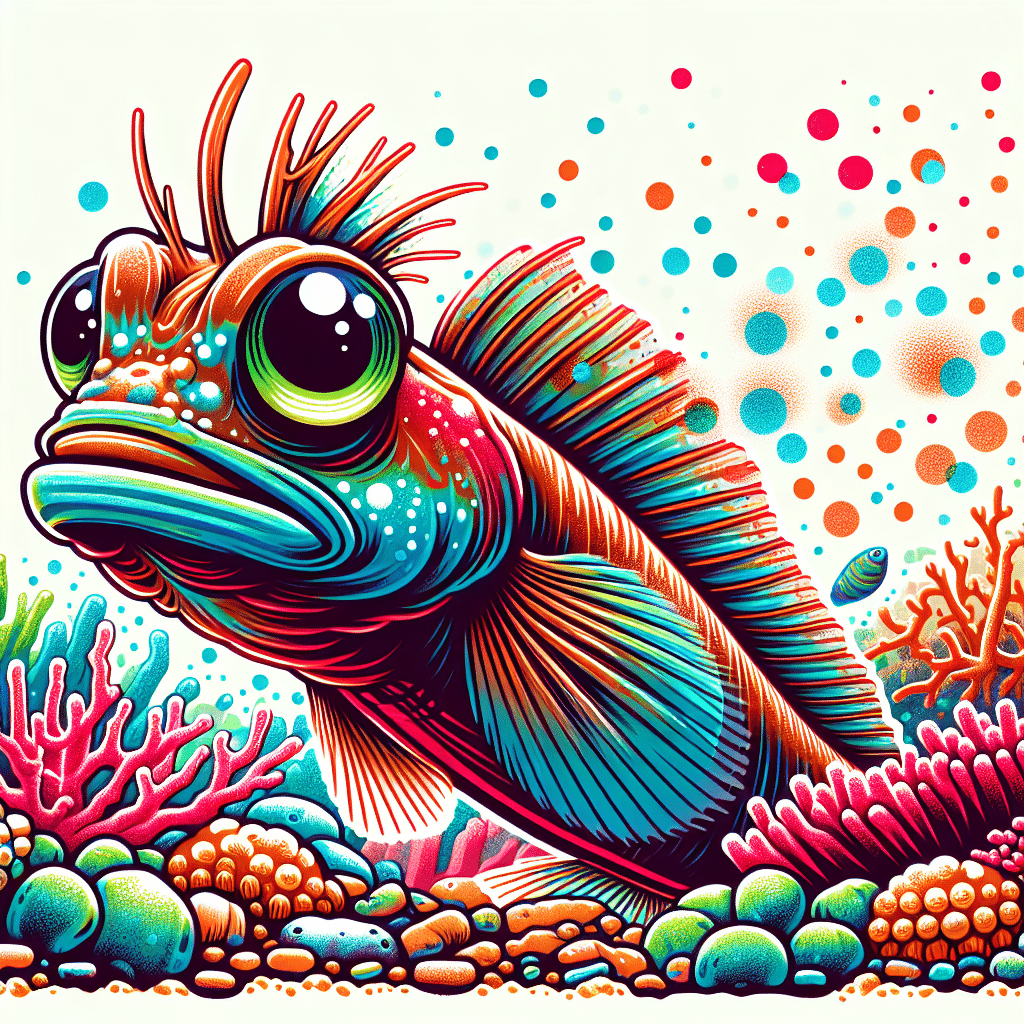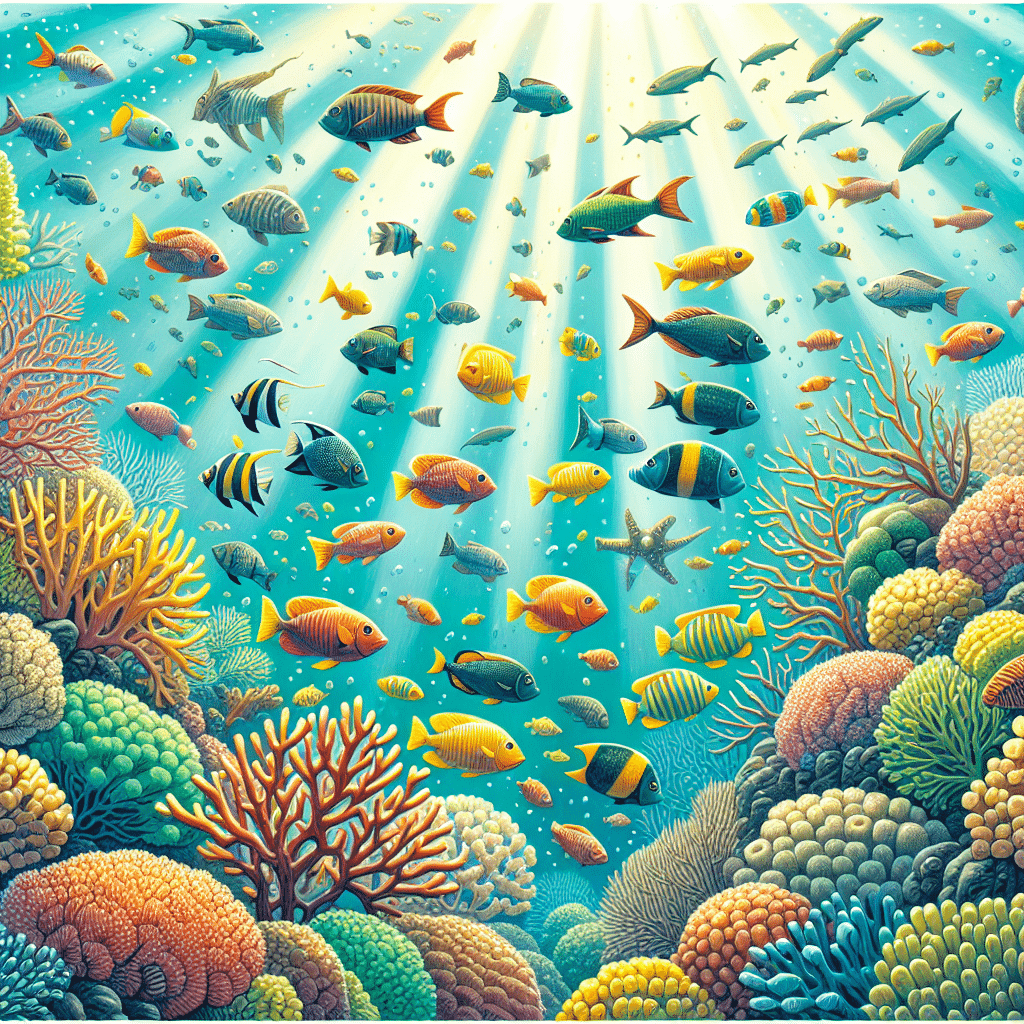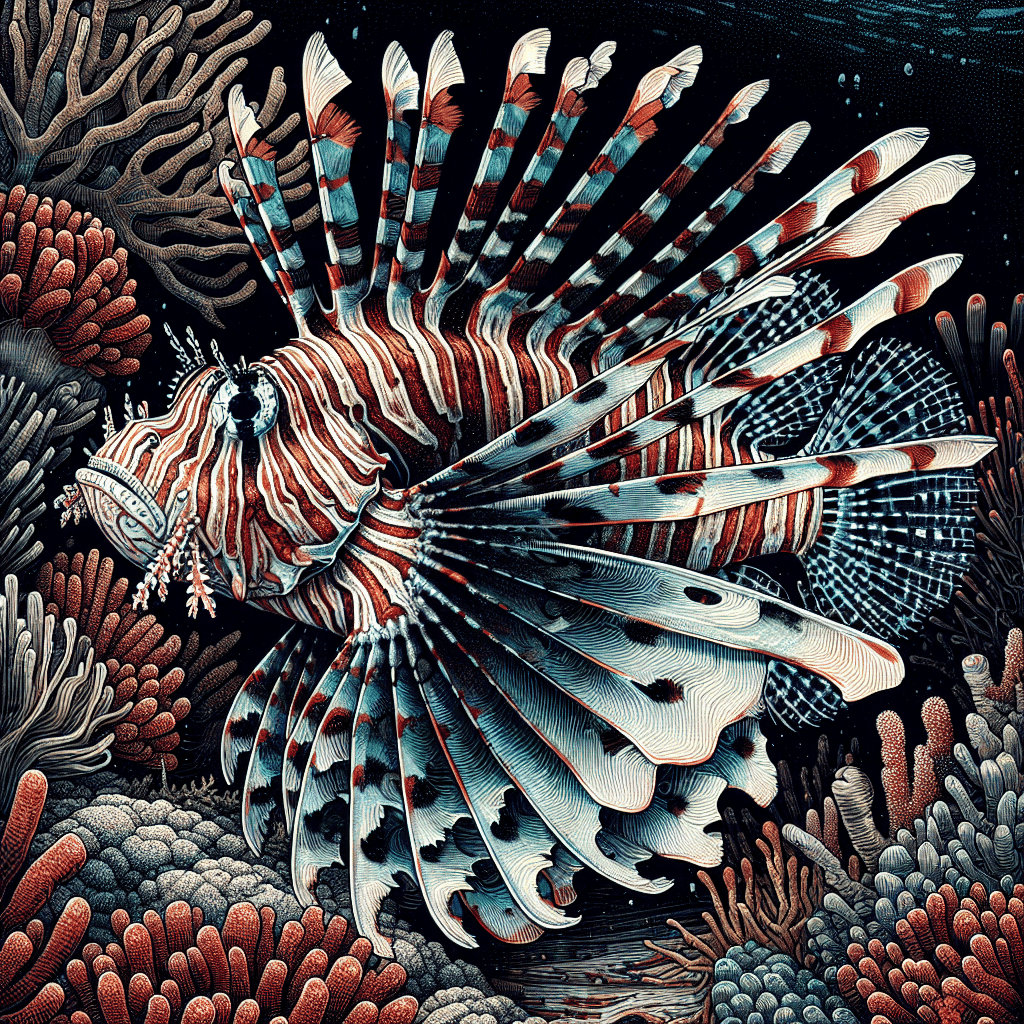Getting to Know Gobies
Gobies: An Overview
I find gobies fascinating. They belong to the Gobiidae family, which is one of the largest fish families out there, boasting over 2,000 species. Gobies typically measure between 25-75 mm in size and are known for their various colors, including blacks, browns, yellows, oranges, and greens, often sporting vertical markings. They are mostly bottom-dwellers and thrive in marine environments, particularly along shores and reefs in tropical and temperate seas (Wikipedia).
A unique feature of gobies is their modified pelvic fin, which resembles a suction cup. This adaptation helps them secure themselves onto rocks, making them quite resilient in their habitats. Some goby species even have symbiotic relationships with certain types of shrimp, showcasing the interesting interactions within their ecosystems (Petco).
Here’s a quick overview of gobies:
| Characteristic | Description |
|---|---|
| Family | Gobiidae |
| Species Diversity | Over 2,000 species |
| Size Range | 25 – 75 mm |
| Habitat | Marine, typically bottom-dwellers |
| Special Features | Suction-cup-like pelvic fin |
Goby Species Diversity
The diversity among goby species is remarkable. These little fish come in various shapes and sizes, with some of the smallest vertebrates in the world found within this family, like the dwarf pygmy goby. Most gobies are relatively small, typically less than 10 cm (3.9 in) in length, and they often inhabit tropical regions where they can be quite abundant (Britannica).
Some notable species include:
- Clown Goby: Known for their vibrant colors and small size.
- Cleaner Goby: Famous for cleaning parasites off other fish.
- Watchman Goby: Recognized for their burrowing habits and partnership with shrimp.
- Diamond Goby: Notable for its sand-sifting behavior.
Here’s a breakdown of some goby species:
| Goby Species | Size (cm) | Unique Traits |
|---|---|---|
| Clown Goby | 4-5 | Brightly colored, reef-dweller |
| Cleaner Goby | 7-8 | Cleans parasites from other fish |
| Watchman Goby | 10 | Forms symbiotic relationships with shrimp |
| Diamond Goby | 15 | Sand sifter, maintains clean substrate |
Gobies are not just interesting to observe; they also play significant roles in their ecosystems, contributing to the health of coral reefs and the balance of marine life. If you’re considering adding gobies to your aquarium, their unique behaviors and adaptability make them a great choice. Be sure to check out more about marine fish to expand your knowledge!
Goby Habitats and Behaviors
Goby Habitat Preferences
As I dive into the world of gobies, I find it fascinating how these little fish can thrive in such a variety of habitats. Gobies can be found in everything from freezing waters to tropical lagoons. Their preferred water temperatures usually range from 25 to 29°C, with salinity levels around 30 to 35 mg/L. They often seek refuge in small openings within reefs or lagoons, which not only provide protection but also serve as nesting sites for their eggs.
Here’s a quick overview of their habitat preferences:
| Habitat Type | Temperature (°C) | Salinity (mg/L) |
|---|---|---|
| Tropical | 25 – 29 | 30 – 35 |
| Temperate | Varies | Varies |
| Reef | 25 – 29 | 30 – 35 |
Gobies typically don’t stray far from their dens, allowing them to find food and mates within their territory. This behavior is essential for their survival, as it helps them avoid predation and ensures they have access to the resources they need.
Unique Goby Behaviors
Gobies are known for their unique behaviors, making them quite interesting to observe. One of their most notable traits is their spiny pelvic fins, which are fused together to form a ventral sucking disk. This adaptation allows them to cling to various surfaces, even in strong currents. It’s not uncommon to see them climbing up waterfalls, showcasing their impressive physical abilities.
With over 2,000 species to explore, gobies come in various colors and sizes, typically ranging from 25 to 75 mm. Many species exhibit camouflaging colors, including blacks, browns, yellows, oranges, and greens, which help them blend into their surroundings. Some even have vertical markings that enhance their disguise, making them less visible to predators.
If you’re interested in adding gobies to your aquarium, understanding their natural behaviors can help you create a suitable environment that mimics their natural habitats. Check out our guides on other marine fish to explore more options that complement gobies in a reef tank setting.
Goby Reproduction and Growth
Understanding how gobies reproduce and grow is essential for anyone interested in keeping these fascinating fish in their aquarium. Their reproductive strategies and growth patterns can greatly influence their care.
Goby Reproductive Strategies
Gobies have some interesting reproductive traits. Many goby species are hermaphrodites, meaning they can change sex depending on environmental factors or social structures. For instance, clean gobies maintain a single sex, while clown gobies can switch between male and female, a phenomenon known as bidirectional hermaphroditism. They typically form breeding pairs and exhibit social monogamy, which means they stick with one partner for breeding.
During spawning, females can lay anywhere from 50 to 1,000 eggs in a single event. These oval-shaped eggs measure about 1-2mm in length. After laying the eggs, males take on the role of protector, guarding the eggs and removing any that show signs of being lifeless. Depending on the species, the hatch time for goby eggs can vary, with clean gobies hatching in about 7 days and clown gobies in around 4 days. For more information on other marine fish, check out our section on marine fish.
| Goby Species | Egg Count per Spawning | Hatch Time (Days) |
|---|---|---|
| Clean Goby | 50 – 1000 | 7 |
| Clown Goby | 50 – 1000 | 4 |
| Round Goby | 89 – 3841 | Up to 18 |
Goby Growth and Development
Once the eggs hatch, gobies go through a growth phase that lasts about 90 days (approximately 3 months). During this time, they develop rapidly, reaching a marketable size suitable for sale. The growth process after metamorphosis is crucial for their survival and adaptability in the wild.
For round gobies, the growth strategy differs slightly as they have almost no larval stage in their development. Female round gobies are known to spawn repeatedly every 20 days from April to September, depositing a substantial number of eggs at a time. Males continue to guard the eggs and the young, ensuring their safety in the nest sites.
Understanding these reproductive and growth patterns is vital for maintaining healthy goby populations in your aquarium. If you’re interested in caring for specific types of gobies like the diamond goby or any other marine species, be sure to research their particular needs for optimal growth and reproduction.
Goby Nutrition and Feeding
Understanding how to properly feed gobies is crucial for their health and well-being. As a goby owner, I’ve learned that providing a balanced diet is key to keeping these fish vibrant and active.
Goby Dietary Needs
Gobies have specific dietary needs that should be met to ensure their health. A well-rounded diet consists of various foods, including:
- Real Oceanic Eggs™: This is a superior source of nutrition and a perfect food size for gobies. They are rich in protein and essential fatty acids. (Reef Nutrition)
- TDO Chroma Boost™: These nutritionally dense pellets are top-dressed with Haematococcus pluvialis, offering astaxanthin for vibrant colors and superior growth. (Reef Nutrition)
- Live Rock: This not only provides hiding places for gobies but also serves as a natural food source while enhancing biological filtration. (Petco)
| Food Type | Benefits |
|---|---|
| Real Oceanic Eggs™ | High in protein and fatty acids |
| TDO Chroma Boost™ | Enhances color and growth |
| Live Rock | Provides shelter and natural food |
Feeding Gobies Properly
When feeding gobies, it’s important to ensure that the food is appropriate for their size and dietary requirements. Here are some tips for feeding gobies properly:
- Variety: Rotate different types of food to meet all nutritional needs.
- Portion Control: Feed small amounts multiple times a day rather than one large feeding to prevent overfeeding and maintain water quality.
- Quality Filtration: Ensure proper filtration to maintain optimal water quality. Gobies thrive in stable conditions with low to moderate water circulation. (Petco)
- Observe Behavior: Keep an eye on how gobies react to the food. If they are not eating, adjust the type or size of the food.
By taking these steps, I’ve found that my gobies are healthier and more active, which is rewarding to see. Regular maintenance of water quality and providing a balanced diet will help keep these fish thriving in my aquarium.
Gobies in Aquariums
Setting up an aquarium for gobies can be a rewarding experience for any fish tank hobbyist. These little guys are not only fascinating to watch but also relatively easy to care for when you understand their needs. Here’s what I’ve learned about creating the perfect environment for gobies.
Aquarium Setup for Gobies
When it comes to setting up an aquarium for gobies, size matters. I recommend starting with a tank that’s at least 10 gallons. The size can vary depending on the species of goby you choose. For example, some gobies can grow larger and may require more space to thrive.
Here’s a quick overview of what you’ll need to consider:
| Feature | Recommendation |
|---|---|
| Minimum Tank Size | 10 gallons (larger for bigger species) |
| Filtration | Proper filtration is essential |
| Water Circulation | Low to moderate to strong |
| Hiding Places | Include live rock for shelter |
Providing proper filtration is crucial to maintain optimal water quality. Gobies thrive in environments that mimic their natural habitats, which typically feature high oxygen levels and stable water conditions.
Goby Tank Requirements
Maintaining the right water parameters is key for the health of your gobies. Here are some important factors to keep in mind:
| Water Parameter | Ideal Range |
|---|---|
| pH | 7.8 – 8.5 |
| Ammonia | 0 ppm |
| Nitrate | < 20 ppm |
| Nitrite | 0 ppm |
| Temperature | 72°F – 78°F |
It’s also a good idea to provide plenty of hiding spots using live rock or decorations. Gobies love to explore and hide, which helps reduce stress and promotes their well-being. Additionally, a well-balanced diet consisting of various foods, including live rock, can enhance their health and provide natural food sources (Petco).
Setting up a goby aquarium can be a fun project that enhances your reef tank experience. With a little preparation and knowledge, you can create a thriving environment for your gobies. Don’t forget to check out other marine fish options like diamond goby or lionfish to diversify your tank!
Invasive Gobies: A Concern
Round Gobies: An Invasive Species
Round gobies, known scientifically as Neogobius melanostomus, are originally from the Black, Caspian, Marmara, and Azov Seas in Eurasia. Unfortunately, they’ve made their way to the Great Lakes region of North America, where they have quickly established themselves as an invasive species. Their ability to thrive in various habitats has led to a rapid expansion of their range, posing significant concerns for local ecosystems (BioKIDS).
These fish prefer rocky environments near lakes and rivers, often taking refuge in sunken objects, piers, and mussel beds. They can handle both fresh and brackish waters and are comfortable at depths ranging from 0 to 30 meters, adapting to temperatures between 0 and 30 degrees Celsius (BioKIDS). With their resilience and adaptability, round gobies are proving to be quite the challenge for local fish populations.
Impact of Round Gobies
The impact of round gobies on native ecosystems is concerning. They are voracious feeders, with their diet consisting predominantly of mussels, but they also consume aquatic insect larvae, the young and eggs of other fish, and aquatic snails. In the Great Lakes, round gobies have been known to prey on zebra mussels and other native species, which disrupts the local food chain and threatens biodiversity (BioKIDS).
Their reproductive strategy compounds the problem. Female round gobies spawn every 20 days from April to September, laying anywhere from 89 to 3841 eggs at a time. Males guard the nests aggressively, ensuring high survival rates for their offspring. With such prolific breeding, round gobies are not just surviving; they are thriving and outcompeting native fish for resources.
As a fish tank and reef tank hobbyist, it’s essential to stay informed about the implications of invasive species like the round goby. Understanding their behaviors and impacts can help in making better decisions for maintaining healthy aquatic environments. For more information on marine species, check out our articles on marine fish and other fascinating ocean dwellers.
Managing Invasive Gobies
As a fish tank and reef tank hobbyist, understanding how to manage invasive gobies is essential for protecting native ecosystems and ensuring a healthy aquarium environment. Round gobies are particularly notorious for their invasive nature, so here are some tips on preventing their spread and effective management strategies.
Preventing Spread of Round Gobies
Preventing the spread of round gobies is crucial to protect local waters. They were introduced to the Great Lakes in the early 1990s through ballast water from ships and have since spread through various waterways, including the Erie Canal and Hudson River (NYS Department of Environmental Conservation). Here are some preventive measures:
| Method | Description |
|---|---|
| Clean Equipment | Always clean your fishing gear, boats, and any equipment that comes into contact with water before moving between bodies of water. |
| Check for Water | Ensure no water is left in your boat or equipment before transporting it to a different location. |
| Educate Others | Share information about the impacts of round gobies with fellow hobbyists and anglers to promote awareness. |
| Report Sightings | If you spot round gobies in new areas, report them to local wildlife authorities to help track their spread. |
Effective Management Strategies
Once round gobies are present in a body of water, managing their population becomes imperative. Here are some strategies that have proven effective:
| Strategy | Description |
|---|---|
| Trapping | Utilize traps specifically designed for gobies to help reduce their numbers in local waters. |
| Dams and Barriers | Implement physical barriers such as dams and canal locks to prevent their movement between water bodies. |
| Electrical Barriers | Use electrical barriers that deter gobies from swimming past certain points in waterways. |
| Chemical Control | In some cases, applying the chemical rotenone can effectively eliminate gobies in localized areas, but this should be done cautiously to avoid harming other aquatic life. |
The success of these strategies largely depends on the specific conditions of the waterway and the extent of the infestation. For more information on marine fish and their management, check out our articles on various species like lionfish, clownfish, and pufferfish.
By staying informed and proactive, I can contribute to the management of invasive gobies and help protect our aquatic ecosystems.
The Spread of Round Gobies
Introduction of Round Gobies
Round gobies were introduced into the Great Lakes in the early 1990s, primarily through ballast water from ships arriving from the Black Sea. Since their introduction, these fish have rapidly adapted to their new environment, establishing populations in all of the Great Lakes. They have also begun to spread into inland lakes by swimming through natural waterways such as the Erie Canal and the Mohawk River, eventually reaching the Hudson River (NYS Department of Environmental Conservation).
Means of Goby Spread
The spread of round gobies can occur through various means. Here are some of the primary ways they travel:
| Method of Spread | Description |
|---|---|
| Ballast Water | Ships take on water in one region and release it in another, introducing non-native species. |
| Bait Buckets | Anglers may unknowingly transport gobies when dumping out leftover bait. |
| Water Compartments | Boats can carry round gobies in compartments that hold water, allowing them to be introduced to new areas. |
| Swimming | Gobies can navigate through natural and manmade water bodies such as rivers and canals, expanding their range. |
Efforts are underway to prevent their entry into sensitive areas like Lake Champlain through the Champlain Canal, with various organizations working together, including the DEC and the U.S. Fish and Wildlife Service (NYS Department of Environmental Conservation).
The round goby’s ability to thrive in diverse environments, coupled with its efficient reproductive strategies, has made it a significant invasive species in North America. For those of us in the aquarium hobby, understanding the implications of invasive species like the round goby is essential for maintaining healthy aquatic ecosystems.



